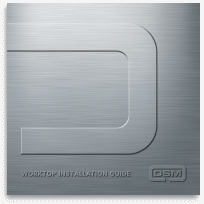When planning or refurbishing commercial washroom facilities, choosing between wall-mounted and freestanding stainless steel wash troughs might seem like a minor decision. But it’s one that can significantly affect both the practicality and performance of the final installation. Each configuration offers distinct advantages, and the right choice often depends on the specific demands of your space, sector, and user needs.
Let’s take a closer look at both types to help guide your decision.
Why Choose a Wash Trough
A stainless steel wash trough offers a practical, hygienic, and space-efficient solution for multi-user handwashing in commercial and industrial environments. Unlike individual basins, wash troughs are designed to accommodate several users at once, reducing queue times and simplifying plumbing layouts. Their seamless, welded construction makes them far easier to clean than traditional sinks with multiple joints or basins, helping to prevent the build-up of bacteria and grime.
Stainless steel, particularly in grades like 304 or 316, is naturally corrosion-resistant, hard-wearing, and ideal for environments where cleanliness is critical, from food prep areas and laboratories to schools and stadiums. Whether wall-mounted or freestanding, a well-specified wash trough delivers both durability and efficiency, making it a smart long-term investment for any high-traffic washroom space.
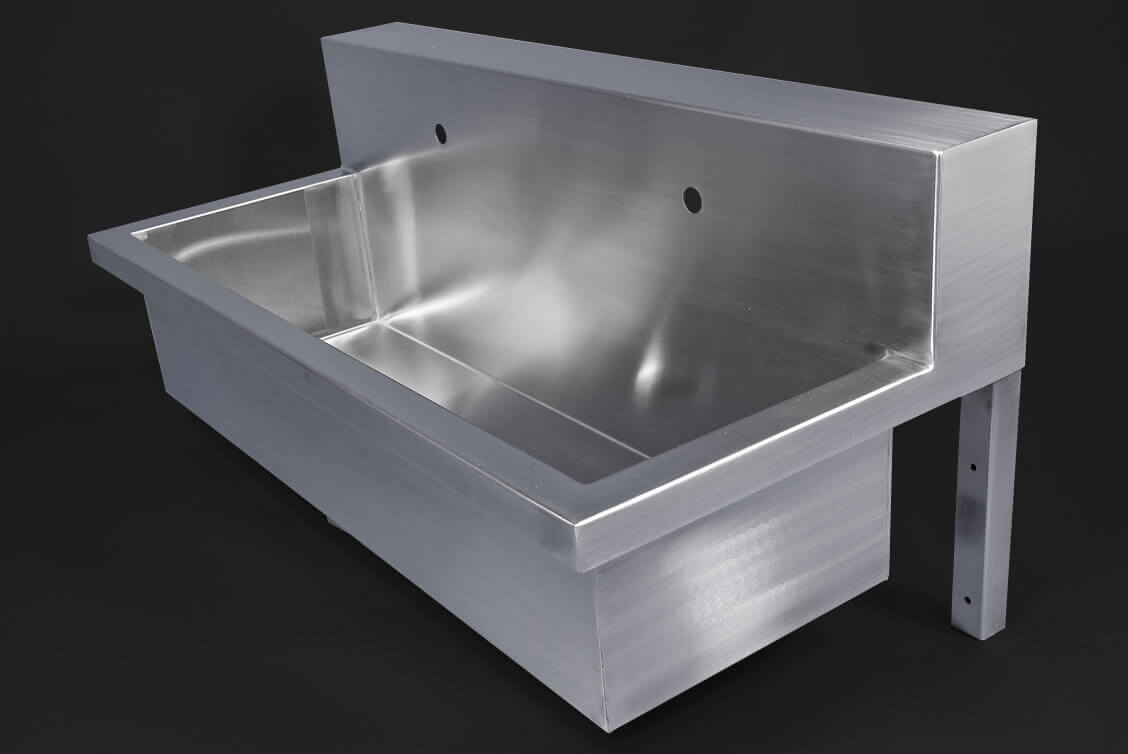
Browse our bespoke steel wash troughs to find out more. We'll provide a free, no obligation quote!
What Are Wall-Mounted Stainless Steel Wash Troughs?
Wall-mounted stainless steel wash troughs are, as the name suggests, affixed directly to a wall surface. They offer a clean, minimalistic look and are commonly used in commercial environments where floor space is at a premium.
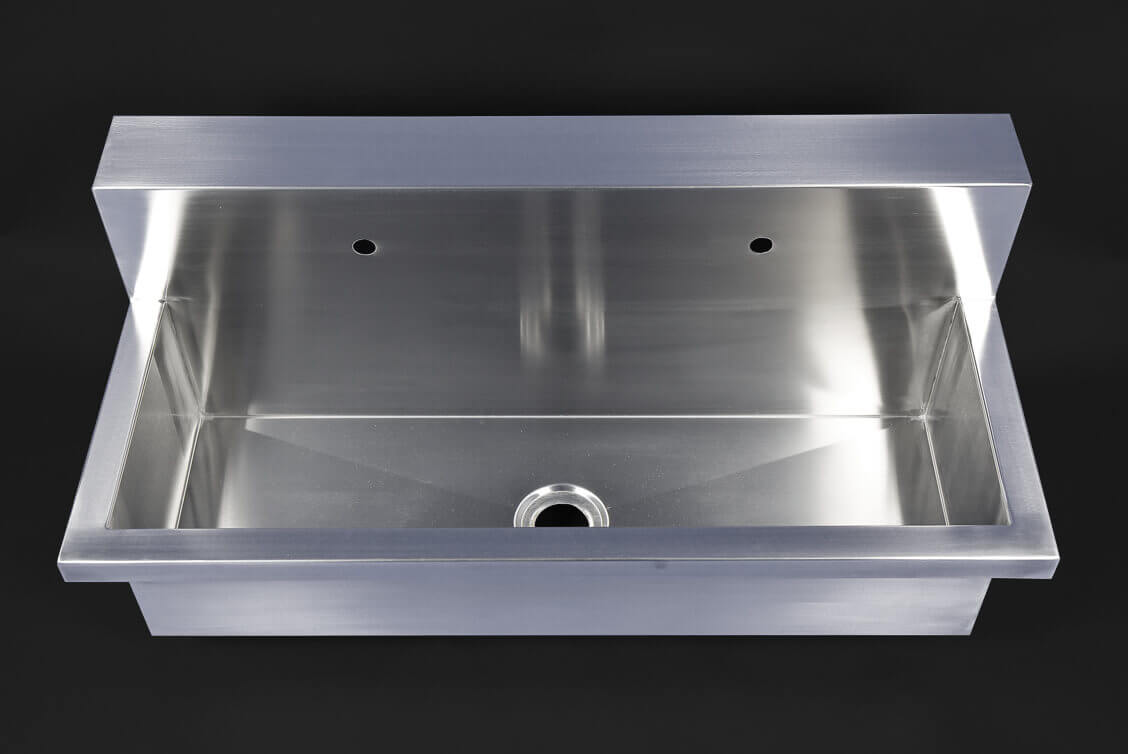
Square Edges
Clean, crisp and contemporary. Square edges are a go-to for modern kitchens where minimalism and precision are key. They create a sleek line and help the surface blend seamlessly with cabinetry and walls.
Design and Installation
These units are mounted using robust wall brackets, which support the trough’s weight and ensure a secure fit. Installation typically requires suitable load-bearing walls, along with plumbing and drainage services routed within or just below the wall surface.
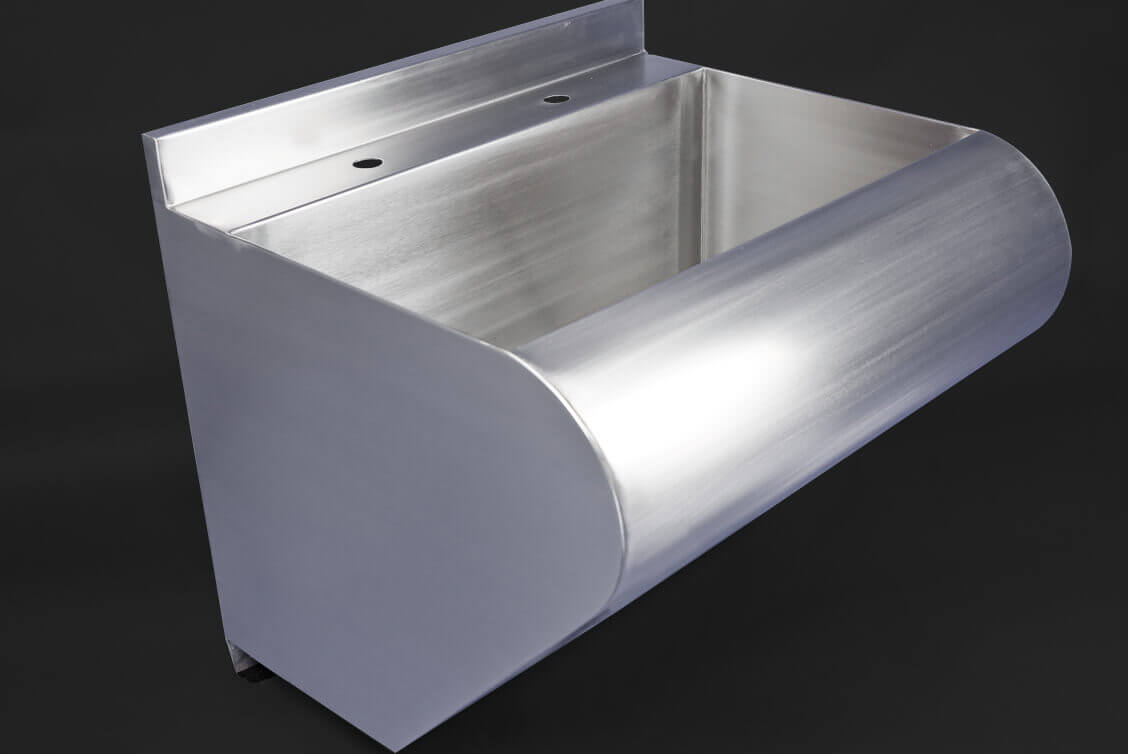
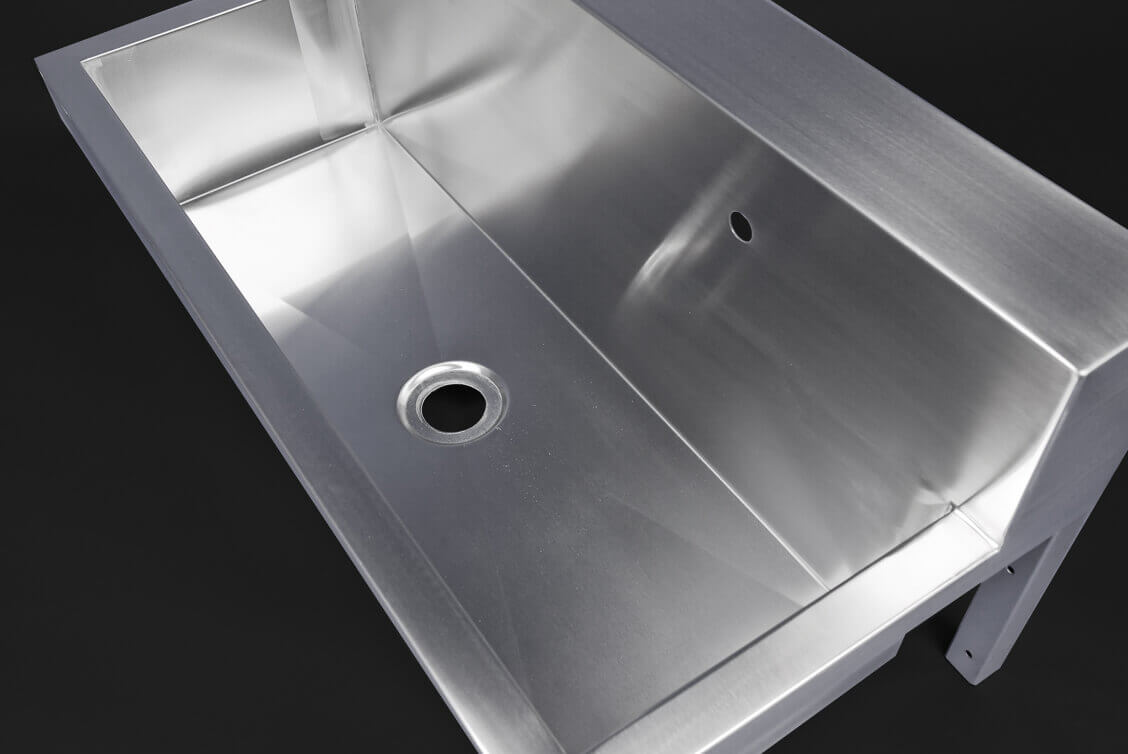
Typical Applications
Wall-mounted units are widely found in schools, commercial kitchens, laboratories, and food manufacturing facilities, where hygiene, space-saving, and efficient cleaning are top priorities.
Key Advantages
- Maximises floor space for easier cleaning beneath
- Streamlined appearance
- Ideal for smaller or restricted areas
Potential Limitations
- Requires a solid wall structure for mounting
- Limited flexibility if the plumbing layout needs to change
What Are Freestanding Stainless Steel Wash Troughs?
Freestanding stainless steel wash troughs are self-supporting units that do not need to be mounted to a wall. They stand on legs or a pedestal base and can be placed independently or adjacent to a wall.
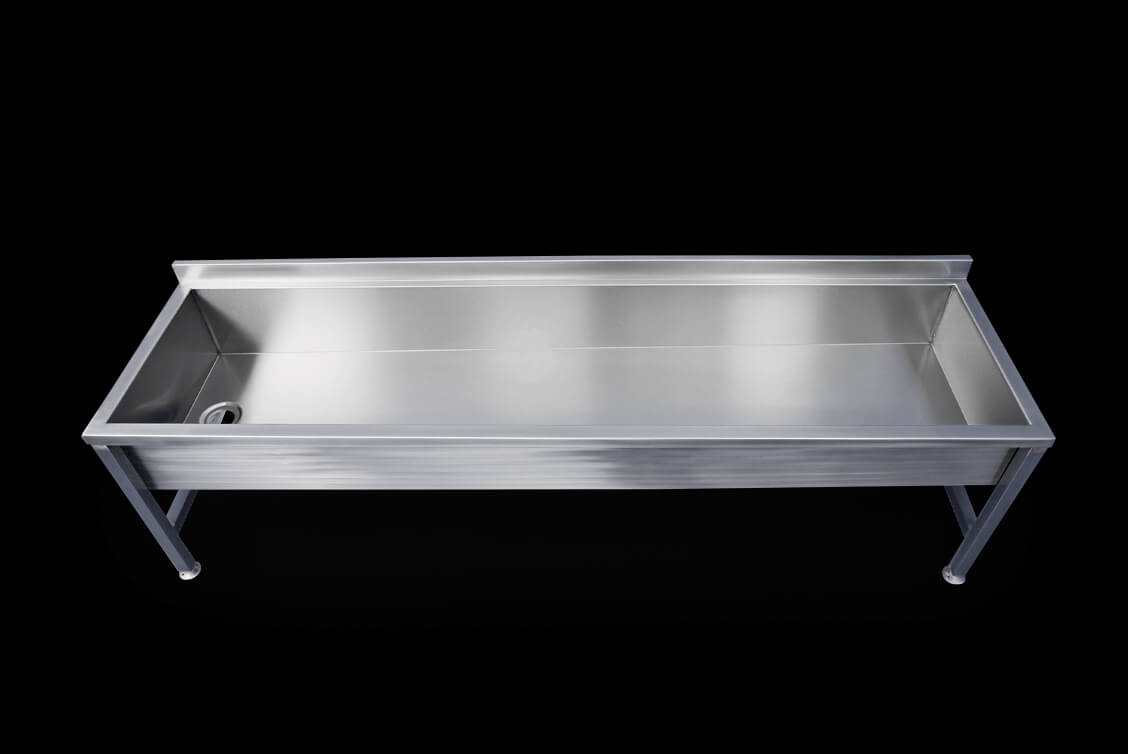
Design and Installation
Installation is typically more flexible. Freestanding troughs can be repositioned more easily, and some models can be accessed from both sides, which is particularly useful in open-plan or high-throughput environments.
Typical Applications
You’ll often see these in factories, leisure centres, outdoor facilities, and construction sites — anywhere robustness and adaptability are key.
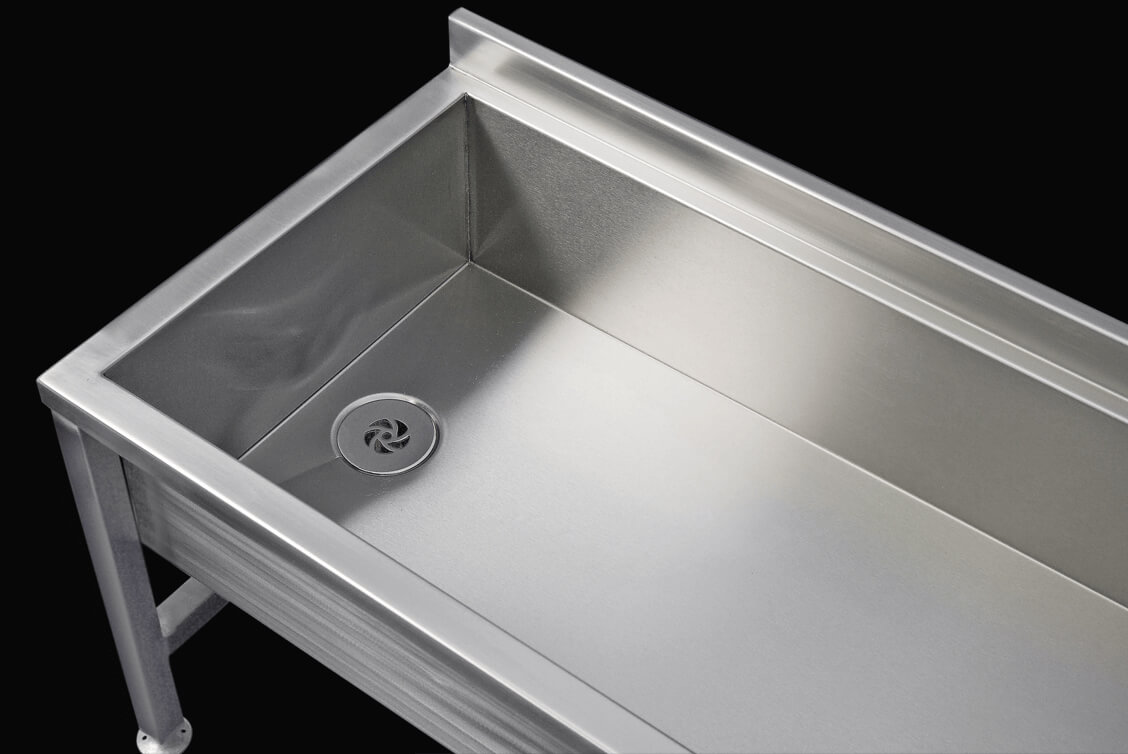
Key Advantages
- Doesn’t require wall support
- More flexible placement options
- Accessible from multiple sides (in some designs)
Potential Limitations
- Takes up more floor space
- Cleaning underneath and around legs may require more effort
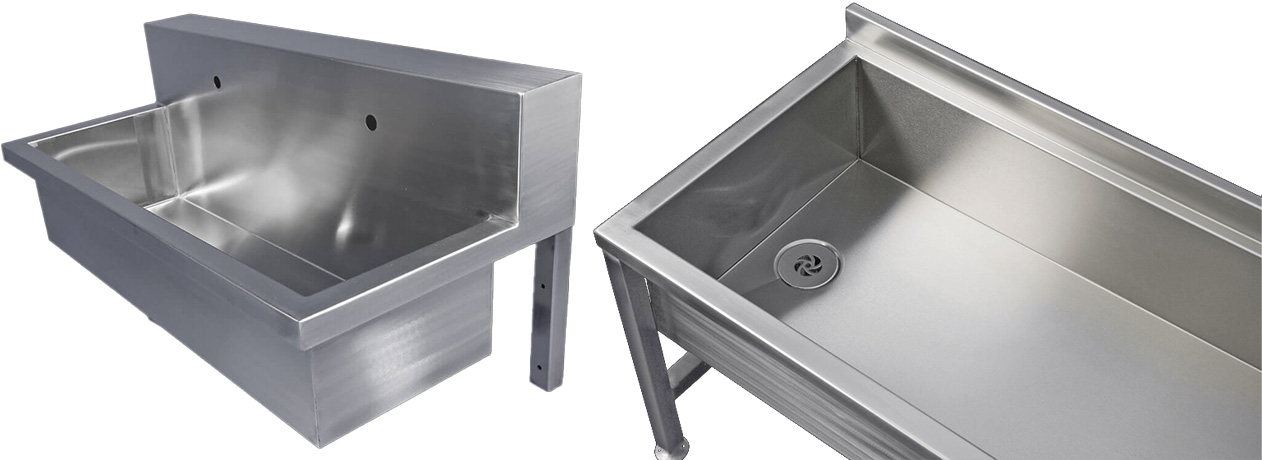
Side-by-Side Comparison
Space Requirements
Wall-mounted troughs conserve floor space and are better suited to tight or narrow washrooms. Freestanding units need more room but provide a substantial footprint that may suit busier environments.
Structural Support
Wall-mounted units rely on strong, load-bearing surfaces, while freestanding troughs are more forgiving in settings where wall strength is questionable.
Accessibility and DDA Compliance
Freestanding troughs can often be adapted to suit wheelchair users more easily, although both types can be manufactured to meet DDA compliance requirements.
Cleaning and Maintenance
Wall-mounted troughs are easier to clean underneath, but freestanding ones may offer better access to pipework for maintenance.
Aesthetic and Practical Considerations
Wall-mounted designs offer a sleek, architectural finish. Freestanding models feel industrial and solid — ideal in rugged environments.

Choosing the Right Wash Trough for Your Setting
When weighing up your options, consider the following:
- How many users will share the trough at peak times?
- What’s the available space like?
- Do you need access from both sides?
- Is wall reinforcement possible, or should you avoid wall load?
- Will the wash trough be installed indoors or outside?
In schools and offices, wall-mounted units often make more sense. In construction, heavy-duty manufacturing, or outdoor settings, freestanding troughs provide long-term resilience.

Customisation Options for Both Styles
Regardless of which style you choose, DSM can tailor each unit to suit your project. We offer custom lengths, bowl depths, splashbacks, tap hole arrangements, and waste outlet positioning. Optional additions like upstands, front aprons, or integral soap dispensers can be included. Sensor taps, push taps, or timed flow options can also be incorporated to support water-saving goals and improve hygiene.
All DSM stainless steel wash troughs are manufactured from high-quality 304-grade stainless steel as standard, with 316-grade available for corrosive or marine environments.
Conclusion
Both wall-mounted and freestanding stainless steel wash troughs have their place — the trick is matching the style to the setting. Wall-mounted troughs shine in cleaner, tighter, more controlled environments. Freestanding versions excel where flexibility, ruggedness, and free placement are required.
Still unsure? Speak to DSM’s team about your project requirements. We’ll help you design and fabricate a bespoke stainless steel wash trough solution that fits your exact specifications — and stands the test of time.
For more information on cleaning stainless steel, see our Stainless Steel Product Care Brochure
If you're interested in a new wash trough, take a look at our metal wash troughs page for more information.
You can give us a call on 01159 255927 whenever you'd like to ask questions, get advice and even ask for a free, no-obligation quote!
Our Guides & Brochures

DSM Stainless Steel Product Care
Please take a moment to read our product care brochure to help you look after you new stainless steel units to ensure they look as good as the day they are installed.
Download
DSM 25 Year Warranty
For more information on our 25 year warranty please download our brochure
Download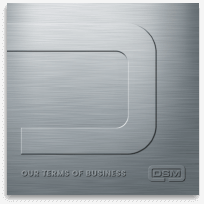
DSM Terms of Business
Our Terms of Business Agreement sets out the terms and conditions on which we agree to provide services for you
Download